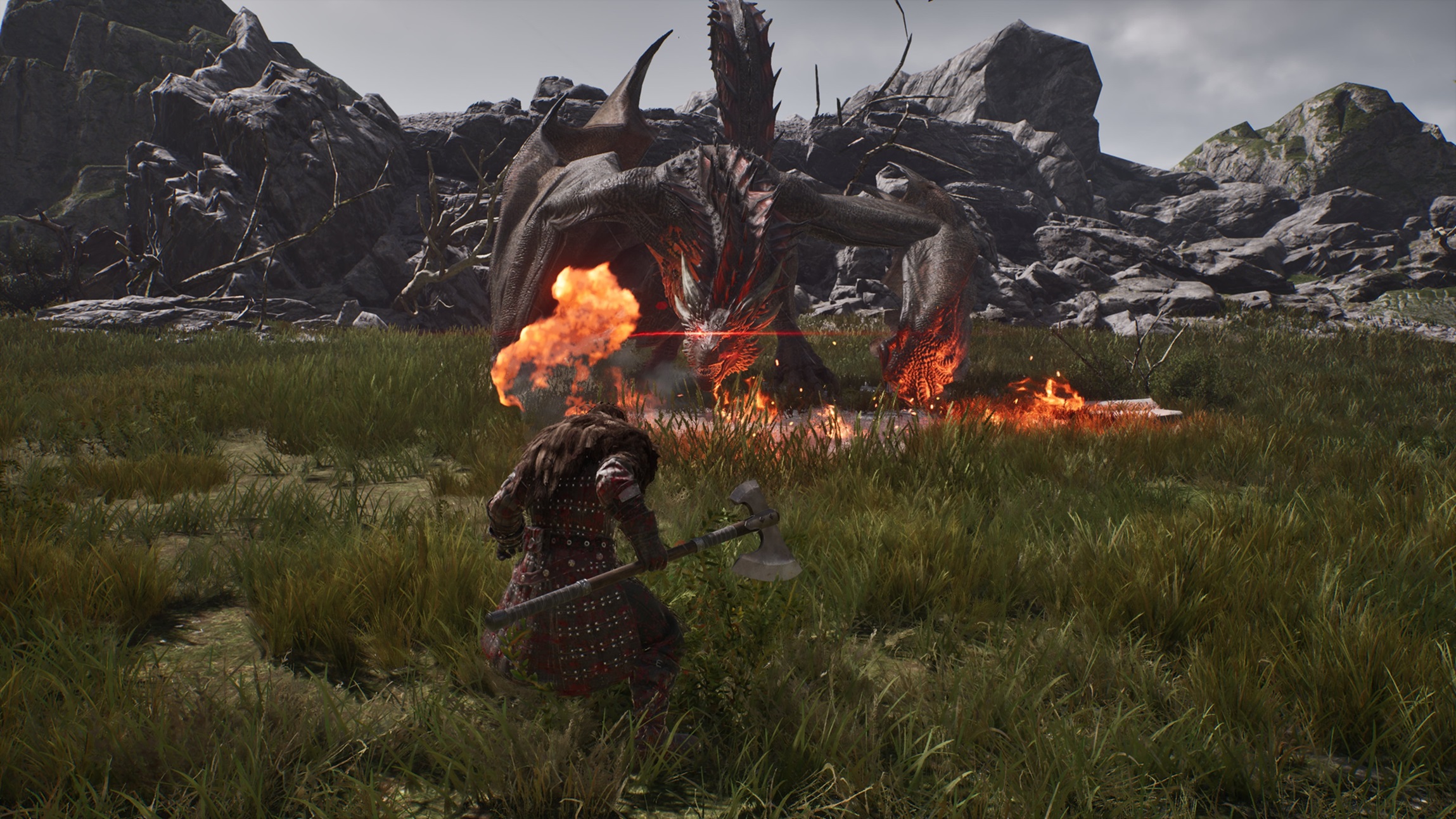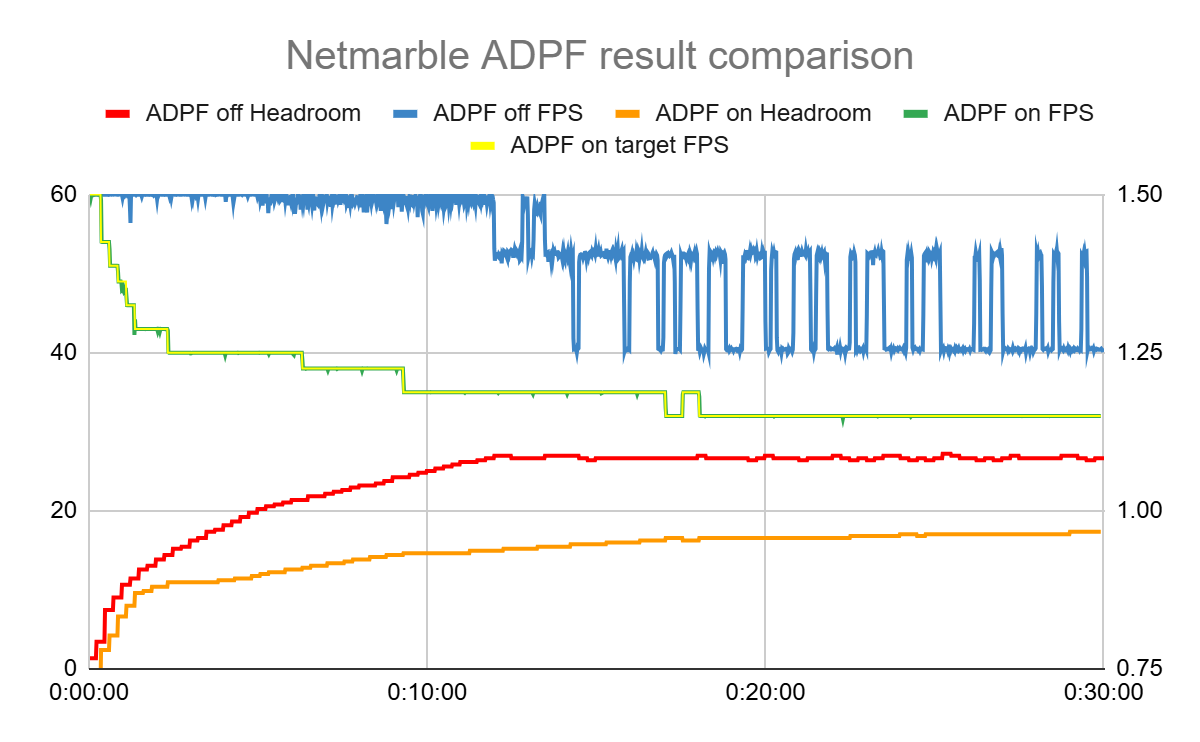


领先的移动游戏开发商 Netmarble 开发了《权力的游戏:国王大道》(即将登陆 Android 平台),这是一款基于荣获艾美奖® 和金球奖® 的《权力的游戏》系列的动作冒险角色扮演游戏。他们在 Android 设备上运行游戏时遇到了性能问题,尤其是热节流问题,这影响了持续性能和用户体验。为解决此问题,他们战略性地利用了 Android 自适应性能框架 (ADPF),并实施了以分辨率缩放和动态帧速率调整为重点的优化。
挑战
高保真度移动游戏需要大量的 GPU 和 CPU 资源,这通常会导致 Android 设备产生过多热量并出现热节流。Netmarble 发现,游戏时长延长会导致设备温度升高,进而导致性能下降,包括帧速率下降和性能不稳定。核心挑战在于,如何在保持视觉吸引力的同时,有效管理设备温度,以避免节流并确保持续稳定的性能。
解决方案
Netmarble 采用了以数据为依据的方法来使用 ADPF,重点是根据实时热状态进行动态调整。
找出性能瓶颈
Netmarble 进行了细致的性能分析,衡量了各种图形质量设置对帧速率和热负载的影响。此分析结果表明,分辨率缩放对 GPU 负载和热输出的影响最大,但对帧速率没有严重影响。重要的是,他们发现其他图形选项(阴影、纹理等)对整体散热性能的影响相对较小。
动态分辨率缩放
Netmarble 添加了动态分辨率系统。该示例使用 ADPF Thermal API 根据设备的温度更改游戏的图片质量。这样,游戏就可以适应不同的条件。当设备冷却后,游戏会使用高分辨率。如果设备过热,游戏会降低分辨率以减少热量。
自适应帧速率调整
除了分辨率缩放之外,Netmarble 还实现了动态帧速率调整。如果游戏的目标 FPS 设置为 60,当系统检测到过热时,可以逐步降低目标 FPS。为了避免热问题,Netmarble 将可伸缩 FPS 的下限设置为 30。 这确保了一致的游戏体验。此外,系统还会在热量降低时逐渐将 FPS 恢复到目标值,从而保持最佳性能。
结果
通过 ADPF 实现动态分辨率缩放和自适应 FPS 调整,显著改善了散热管理和持续性能。

- 增强了热余量:ADPF 将平均热余量从 1.04 降低到了 0.92(降低了 11%),从而防止了性能下降并延长了设备使用寿命。热余量值从未超过 1.0,从而防止设备过热。
- 帧速率更稳定:ADPF 会根据设备的热状态智能调整游戏的目标 FPS,从而提供更流畅的游戏体验。如果没有 ADPF,游戏的 FPS 可能会因热节流而出现大幅波动(例如从 40 到 56)。这种帧速率不一致的情况是由设备难以控制热量所致,可能会导致游戏体验不佳。借助 ADPF,游戏会根据需要主动降低目标 FPS,以防止过热,从而确保更稳定、更一致的帧速率(通常在 50-60 FPS 范围内)。这可防止与热节流相关的突然帧速率下降,从而显著改善玩家体验,让玩家获得更愉快的游戏体验。
- 保留高品质图形:Netmarble 将分辨率缩放作为主要调整机制,从而最大限度地减少了热管理对视觉的影响,并将其他设置(纹理、效果等)保持在较高水平。
总结
在 ADPF 的指导下,Netmarble 专注于解决分辨率缩放和动态 FPS 调整问题,成功缓解了《权力的游戏:王国之路》中的过热问题,同时在性能、视觉质量和用户体验之间保持了最佳平衡。他们对 ADPF 的战略性使用,为面临类似挑战的移动游戏开发者提供了一种有效的方法。ADPF 让玩家能够获得更可靠、更愉快且更一致的体验,让他们能够玩得更久,帧率下降更少,并且不必担心设备过热。采用此解决方案后,Netmarble 能够一如既往地提供优质的游戏体验,同时确保设备性能和使用寿命达到最佳水平。
立即开始在 Unity、Unreal 和 C++ 中使用 ADPF
有意使用 Android 自适应功能的开发者应执行以下操作:
- 详细了解 ADPF、Unreal Engine ADPF 插件和 Unity Adaptive Performance Android 提供程序。
- 将 ADPF 与默认的 Unity 质量级别和 Unreal Engine 可扩缩性搭配使用。
- 监控游戏的表现,确保其符合预期。尝试不同的设置(分辨率、帧速率、阴影、纹理等),以获得最佳性能并尽可能减少热量增加。
- 单独更改图形质量设置,以减少性能突然下降。
无论您使用哪种引擎,都可以随时选择直接使用 API。如需了解详情,请参阅 Android 自适应和 Unreal Engine ADPF 插件。

